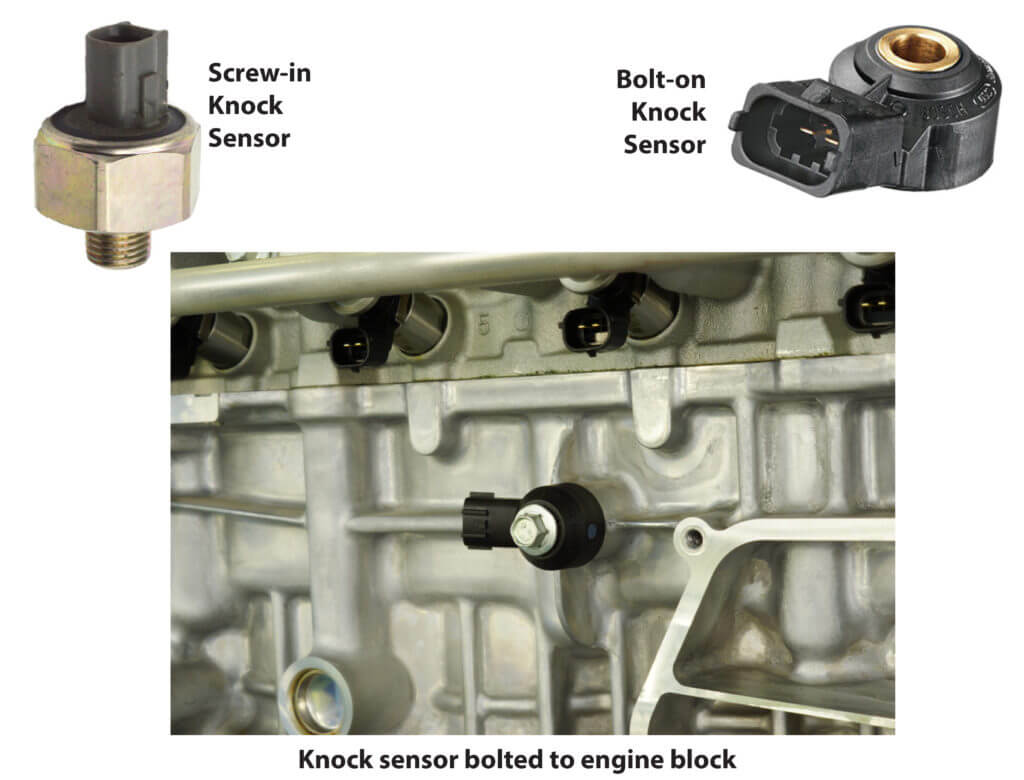How a knock sensor works
What a knock sensor does and why it’s so important
A knock sensor receives a quick bias voltage from the ECM at startup, but that’s just to test the integrity of the connection. From that point on, the sensor doesn’t require any voltage. Here’s how a knock sensor works. There’s a piezoelectric crystal inside the sensor that generates an AC voltage when it’s compressed by engine vibrations. The vibrations occur if the engine encounters preignition or detonation. So, a knock sensor is really kinda of a microphone that allows the ECM to listen for abnormal engine noise. The sensor is tuned to the discrete frequency range of preignition and detonation so it doesn’t false alarm from normal engine noise.
Why does the engine need a knock sensor?
To get maximum power from each combustion event, engineers have determined that the combustion should reach maximum for at 14° after top dead center (TDC). To make sure the air/fuel mixture reaches maximum force at that point, the ignition system initiates the spark early so the flame front can grow. The timing of the spark varies depending on engine RPM, so it may occur at a few degrees before top dead center (BTDC) at idle but advance to as much as 20° BTDC at 3,000 RPM. The car’s ECM watches the values from the knock sensors to make sure the combustion events occur as planned.
If the sensor detects knock, the ECM adjusts ignition timing, often retarding the spark to shorten burn time. If that doesn’t work, the ECM can adjust the air/fuel mixture. If the knock continues, the ECM will switch to SAFE MODE. At that point it uses the misfire monitor to track how the engine is performing. The driver will often notice a lack of power when the engine is in safe mode.
How does a knock sensor fail?
The knock sensor can be mounted in the valley of a V style engine or on the side of the engine block. It’s exposed to strong vibration, oil, and moisture. If you understand how a knock sensor works, then you can see how if a seal fails and moisture and oil enters the sensor, it prevents the piezoelectric crystal’s ability to produce an AC voltage. If that happens, the sensor must be replaced.
Types of knock sensors?
Knock sensors can be screw-in or bolt-on. If you’re installing a bolt on style sensor, torque is critical, so always use a torque wrench. The sensor can be mounted on the side of the engine block or in the cylinder head.

